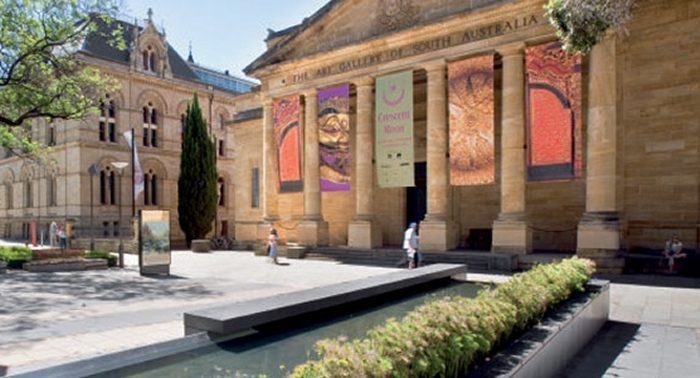
Image source: City of Adelaide.
The Art Gallery of South Australia has been fitted with 64kWh of battery storage, a demonstration system to help manage the gallery’s electricity demand.
Where demand tariffs/charges apply, they can account for a significant chunk of a power bill. A demand tariff is a daily capacity charge based on the peak power (in kW) drawn from the grid; also referred to as peak load.
Even if the peak for a period is only hit very briefly on one day and the rest of the time there’s comparatively low demand, the charge is still applied to the entire period. This could be a month, a quarter or even a year, depending on the nature of the contract. While demand tariffs have been around for a long time for businesses, residential demand tariffs are becoming more common.
Besides storing electricity generated by solar panels for self-consumption, this is another area where battery storage may be of some assistance – smoothing out spikes in load and minimising costly related charges.
As well as the Gallery, an associated joint State Government-City of Adelaide battery initiative has also seen energy storage added to the City of Adelaide’s Mile End Works Depot, and battery systems will be installed at the State Library and Adelaide High School.
“By fitting these locally-manufactured energy storage systems to some of our most iconic buildings, we can demonstrate the incredible opportunities that exist in this sector,” said South Australian Energy Minister Tom Koutsantonis. “These batteries are a glimpse into the future. More and more businesses will be using these types of systems to flatten out their demand and lower power bills.”
The battery systems are designed and built by Simec Zen Energy, which partnered with GreenSync to incorporate smart automation technology to maximise the economic benefits of the systems.
Adelaide-based Simec Zen Energy is the rebranded Zen Energy. Last month, GFG Alliance, which is also the new owner of Whyalla’s steelworks, acquired a controlling stake in Zen Energy. Among GFG’s companies is Simec Energy, hence the new name for Zen.
The City of Adelaide has been at the forefront of supporting energy storage and was the first in Australia to offer subsidies for battery systems, plus offers financial support for other energy efficiency measures. Residents, businesses and community groups in the City’s area can take advantage of incentives including up to $5,000 for installing an energy storage system, plus $5,000 for installing solar panels.
“The City of Adelaide is proud to support the installation of battery storage on iconic buildings, such as the Art Gallery,” said Adelaide Lord Mayor Martin Haese. “This complements the support we provide to city residents and businesses to install solar PV, battery storage, low energy lighting and other energy efficient measures through our Sustainability Incentive Scheme (SIS).”
The Art Gallery of South Australia is no stranger to trialing new energy-related technology – it was also a very early adopter of solar power; but unfortunately that pioneering venture didn’t work out too well. Back in 2003, the Gallery has 129 solar panels installed. At 20 kW capacity, it was a huge system for the time and very expensive; costing $200,000. However, it seems the system had some major issues from the outset and was eventually written off.
Thankfully, the Gallery’s foray into solar wasn’t the general experience across Australia of the technology. Back in 2003, there were just over a thousand small scale solar power systems in Australia and today there are more than 1.7 million.

 RSS - Posts
RSS - Posts



Speak Your Mind